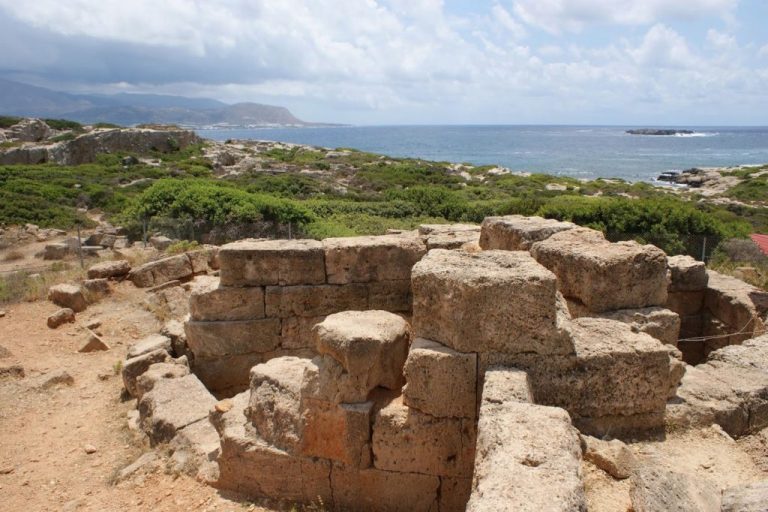On the extreme west coast of Crete, Falassarna is a testament to the grandeur of ancient civilizations and their mastery over the seas. Constructed around the 7th century BC by the Dorians, Falassarna remained relatively obscure until the 4th century BC when it began its ascent to prominence.
Strategic Naval Power:
Falassarna’s strategic location, overseeing the sea passages to Alexandria, Egypt, catapulted it into becoming one of the leading naval powers of its time. The city-state’s prowess was not just in its military might but also in its economic and cultural achievements. It boasted a fortified harbor, extensive defensive walls, and its own currency, symbols of a self-sufficient and flourishing city-state.
The Pirate Haven:
However, the tides of fortune were not always favorable. Continuous battles with neighboring cities and recurrent earthquakes eroded its prosperity. The citizens of Falassarna, well-versed in the intricacies of the Mediterranean, turned to piracy as their city waned. This shift marked a period of turmoil and conflict, culminating in the Romans devastating Falassarna’s harbor in 69 BC to curb the pirate threat.
Nature’s Final Blow:
A catastrophic earthquake in 365 AD was the final stroke of fate for Falassarna. The seismic event lifted the west coast of Crete by 6-9 meters, rendering the once mighty port unusable as it receded from the sea. This natural calamity sealed the fate of Falassarna, marking the end of its era as a maritime force.
A Visit to the Ruins:
Today, visitors to ancient Falassarna are greeted by a landscape that whispers tales of its glorious past. The ancient city’s port, now about 100 meters from the sea, and the carved tombstones discovered during excavations that began in 1986, offer a glimpse into the lives of its inhabitants. The “acropolis” atop the hill, remnants of the Apollo and Dictyna temples, and the famed “throne” of Falassarna are among the relics that draw history enthusiasts and curious travelers alike.
Personal Reflections:
Walking through the ruins of Falassarna, one can’t help but feel a deep connection to the past. The contrast between the serene beauty of the site today and its tumultuous history is striking. Standing where the ancient harbor once buzzed with activity, it’s easy to imagine the majestic ships setting sail or returning from distant lands. The “throne,” possibly a place of judgment or worship, evokes questions about the daily lives, beliefs, and rituals of the people who once thrived here.
Conclusion:
Falassarna is a beacon of ancient civilization’s ingenuity, resilience, and eventual vulnerability to the forces of nature and human conflict. A visit to this historical site is not just an exploration of Crete’s past but a poignant reminder of the cyclical nature of human history, where every end is a new beginning.
Sorry, no records were found. Please adjust your search criteria and try again.
Sorry, unable to load the Maps API.
